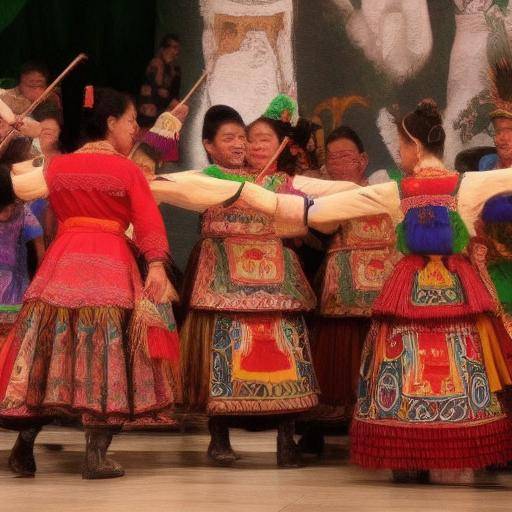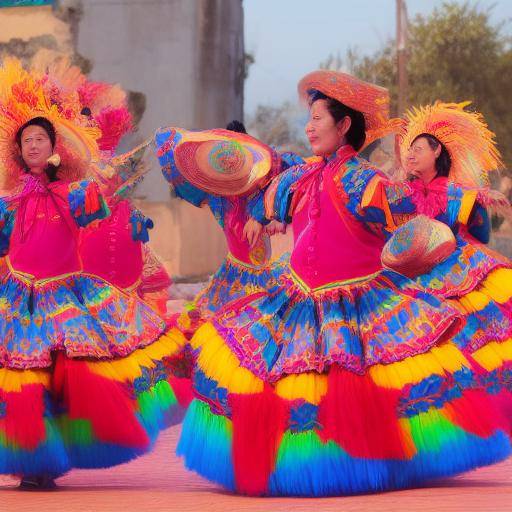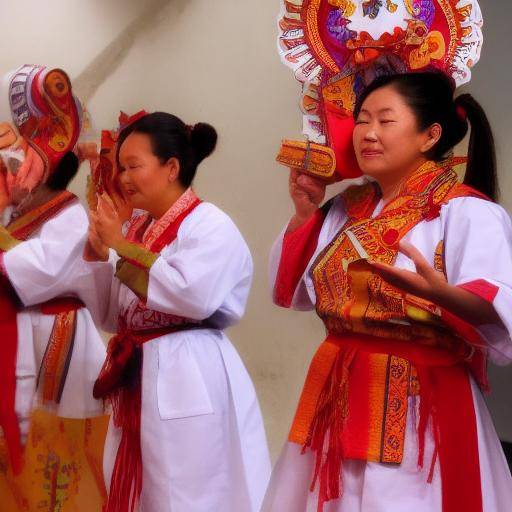
Welcome to the exciting world of Asian folklore, where the legends of nature come to life through fascinating myths that have endured over generations. In this article, we will explore the rich and diverse range of myths of nature in Asian folklore, discovering its history, cultural meaning and its striking similarities and differences. From the majesty of the eastern dragons to the stories of gods and spirits that dwell on earth and water, immerse yourself in a journey through time and space while exploring the wonders of these legends rooted in Asian culture.
Introduction
Asian folklore is distinguished by its wealth and diversity, and the myths of nature play a central role in these traditions. These myths reflect the deep connection between the human being and his natural environment, as well as reverence and respect for the natural elements. Over the millennia, these narratives have been transmitted from generation to generation, enriching the cultural identity of Asia and leaving an indelible mark on the collective imagination. In this article, we will explore in detail some of the most emblematic myths that have endured over time, as well as their influence on Asian folklore.
History and Background
The history of the myths of nature in Asian folklore dates back to immemorial times. From ancient civilizations to imperial dynasties, these narratives have evolved, adapting to different historical and geographical contexts. In China, for example, the myths of dragons go back to the ancient Xia dynasty, where these mythical creatures were regarded as symbols of power and good fortune. In Japan, worship of the gods of nature, known as "kami", has permeated Japanese cosmology, influencing religious festivals, rituals and practices.
Over the centuries, Asian folklore has been shaped by Buddhist, Taoist, Hindu and Animist influences, enriching the variety and complexity of these myths. The accounts of supernatural beings, spirits guardians of nature and deities that govern heaven, earth and sea have captivated generations of Asians, becoming an integral part of their cultural identity.
Analysis in Deep
The myths of nature in Asian folklore have played a crucial role in the formation of the worldview of Asian societies. Reverence by nature as a sacred force, together with the importance of maintaining a harmonious balance with the natural environment, is reflected in these stories. Beyond mere folkloric narratives, these myths have been used to convey ethical, moral and philosophical values, providing spiritual and ethical guidance to Asian communities throughout the centuries.
The timeless nature of these myths has also played an important role in its durability. Despite socio-political and technological changes, these narratives have persisted, reinventing and adapting to changing circumstances. The wisdom contained in these myths continues to resonate in contemporary Asian society, recalling the importance of preserving nature and honoring its beauty and power.
Comprehensive review
Comparatively, the myths of nature in Asian folklore present a rich variety that reflects the cultural diversity of the continent. From the stories of sacred mountains inhabited by gods in the Himalayas to the narratives of forest spirits in the tropical regions of Southeast Asia, these myths capture the vast range of landscapes, climates and ecosystems present in Asia. Through these stories, Asians have forged a deep connection with nature, recognizing its vital importance to human existence.
Comparative analysis
By comparing the myths of nature in different Asian cultures, it is possible to identify certain similarities and differences. For example, the dragon figure, which is found in the mythologies of China, Japan and Korea, is revered as a symbol of power and good fortune in all these cultures. On the other hand, the deities associated with water, such as the goddess Ganga in India and Mazu in China, reflect the historical and cultural importance of rivers and seas in the region.
In terms of differences, the myths of nature in the Himalayas, like the Yeti in Tibet and Nepal, have a more mysterious nature and evoke a sense of the unknown, compared to the myths most linked to agriculture and fishing in the coastal regions. These variations reflect the unique social, geographic and climate dynamics that have shaped the diversity of nature myths in Asia.
Practical Tips and Recommendations
If you are interested in immersed in the fascinating cosmology of nature myths in Asian folklore, here are some practical tips to enrich your exploration:
- Reading: Explore books and online resources that address Asian mythology, offering a wide variety of nature myths.
- Travel: Consider visiting historical and natural sites associated with myths, such as temples, sacred mountains and shrines.
- Talks: It engages conversations with people from various Asian cultures to better understand the importance of these myths in their lives.
- Art and Culture: Discover how nature myths have influenced various forms of art, including painting, sculpture, dance and theatre.
Conclusions and FAQs
In conclusion, the myths of nature in Asian folklore transport us to a world of wonders and mysteries, revealing the profound connection between humanity and nature. These timeless narratives, which have inspired countless works of art, literature and philosophy, continue to exert their influence in contemporary Asian society, reminding us of the importance of maintaining a harmonious balance with our natural environment.
Frequently asked questions
1. Why are nature myths so important in Asian folklore?
The myths of nature represent reverence and respect for the natural environment, as well as accumulated wisdom throughout generations to live in harmony with nature.
2. What is the myth of nature best known in Asia?
One of the best known myths is that of the dragon, which is found in several Asian cultures and is associated with power and prosperity.
3. How have the myths of nature influenced Asian art and culture?
The myths of nature have been an inexhaustible source of inspiration for artists, writers and creators of all artistic disciplines in Asia, giving rise to masterpieces that convey the wealth of these narratives.
4. What lessons can we learn from the myths of nature in Asian folklore?
These myths remind us of the importance of preserving nature and maintaining a harmonious balance with the natural environment, as well as the profound connection between humanity and nature.
5. How can I explore more deeply the myths of Asian nature?
In addition to reading specialized books and websites, consider visiting historical sites and participating in festivals and celebrations related to these myths to immerse yourself in their rich tradition.
6. What nature myths in Asia are linked to climate change and environmental conservation?
Some myths of nature convey the importance of protecting certain natural areas or respecting certain mythical creatures, which can offer valuable lessons on environmental conservation and climate change.
With this we conclude our journey through the myths of nature in Asian folklore. We hope you have enjoyed this immersion in a fascinating world of ancient beauty, mystery and wisdom. The myths of nature in Asian folklore remain an invaluable treasure, reminding us of the profound interconnection between humanity and the natural world, and offering eternal inspiration for reflection and creativity.
Remember to explore these myths with open mind and deep respect, recognizing their cultural and spiritual value in the lives of millions of people throughout history. Happy journey through the myths of nature in Asian folklore!






















































